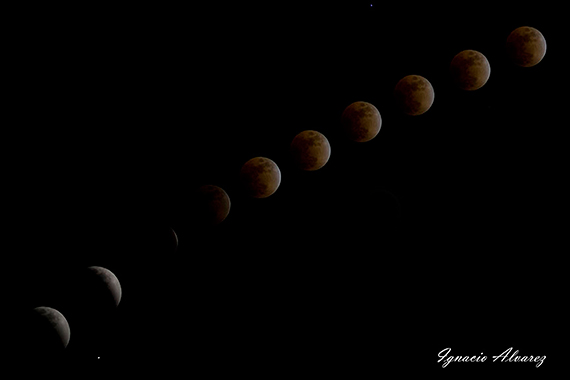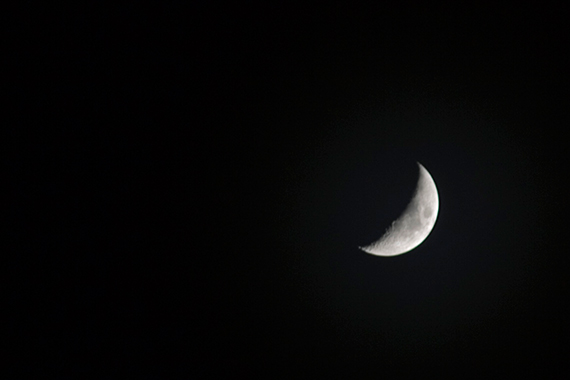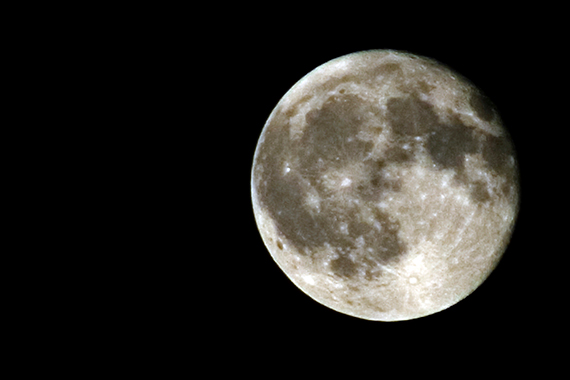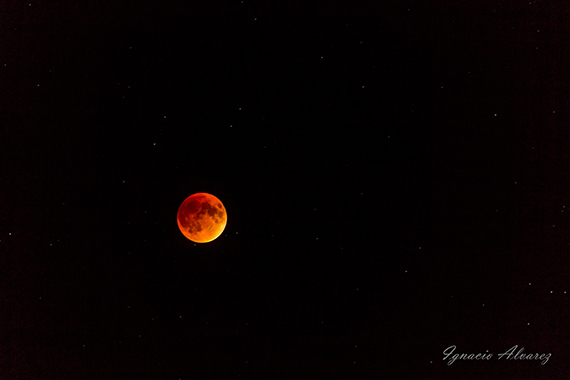Darn, I missed the last eclipse of a full moon. Oh well, now I have to wait for the next one. To be sure I don’t miss it the next time, I am arming myself with this catalog of lunar eclipses from NASA.

I’ve photographed the moon many times—and one eclipse. I prepared this article to give you an idea of how to photograph an eclipse, but now it’s not necessary.
I have photographed the moon both on a regular night with a full moon and during an eclipse. Both of them are easy if you know how. In case you want to photograph an eclipse, the following is a list of the things that you’re going to need.
- 35mm camera film or digital
- 300mm lens or longer
- Cloudless night during the event
That’s it! Many people try to photograph the moon using a tripod but they don’t realize that it’s not necessary. Why, you ask? Because of the “sunny 16” rule in photography. Wait! In the middle of the night there is no sun! Well, maybe not illuminating you, but it is illuminating the moon.
The sunny f/16 rule states that you can photograph anything that is illuminated by the sun using a shutter speed one number higher than the film or ISO that you’re using in your camera. For example: if you’re using ISO in your camera, the shutter speed/aperture combination should be 1/125 at f/16. Very simple, right?

If you’re using an older mechanical film camera and the battery is dead and you cannot read the light meter, using the sunny f/16 rule will allow you to photograph anything that is illuminated by the sun.
What about digital cameras? Digital cameras or film cameras are no different in this situation. For shots of the moon, either camera will capture the moon the same way or anything else illuminated by the sun. Don’t forget that you have a light meter to help you obtain the correct exposure and viewing the images on the screen gives you immediate feedback so you can make changes in the event you need to. Okay, enough of that. Let me tell you what you can do to photograph the moon and why a tripod is not necessary.
If you’re using a digital camera, do the following:
- Set your aperture to f/16.
- Set the ISO to 100.
- Set the white balance to daylight.
- Set the color mode to landscape.
- Set your shutter speed to 1/125 of a second.
For a film camera, forget steps 3 and 4.
As you can see, everything is very easy to do and chances are that if you follow this information you’ll get great shots of the moon. But, wait I’m not done yet!
Since the moon is so far away, why use the lens almost fully closed? Since the moon is thousands of miles away from us, we should not worry about depth of field. So, why not use the lens fully open and take advantage of using a very fast shutter speed? This is what I do every time that I photograph the moon.
- f/16 at 1/125 of a second, right? So that means that you can use reciprocal exposures:
- f/11 at 1/250
- f/8 at 1/500
- f/5.6 at 1/1000
- f/4 at 1/2000
- f/2.8 at f/4000
What? Photograph the moon using a 1/4000 of a second? YES! All these are reciprocal exposures and what that means is that each of these settings will give you the same amount of light in your sensor. Of course, some people do not have their cameras set correctly. A couple of my students keep accidentally setting their exposure compensation settings to -4.0 stops on their Nikon cameras, and it’s all because the compensation dial and the aperture dial are one and the same in some Nikon cameras. Why Nikon placed these setting together, I don’t know. So if you have a Nikon camera and, like ALL of my students, you use your camera in manual mode, make sure that you’re in the correct setting when changing the aperture of the lens so you don’t accidentally set a (-) minus exposure on the aperture of the lens.
Back to the very fast shutter speed at night. Is it possible to use that in the middle of the night and get the picture? Of course it is. Anything that is illuminated by the sun during the day or at night (the moon) can be photographed using this photography rule. Of course, if you’re going to photograph an eclipse of the moon, the setting will be very different—at least the shutter speed. During an eclipse you will be forced to use slower and slower shutter speeds to compensate for the loss of light. But you’ll get the image!
About the Author:
Ignacio Alvarez is a photography instructor at City Colleges of Chicago.
Like This Article?
Don't Miss The Next One!
Join over 100,000 photographers of all experience levels who receive our free photography tips and articles to stay current:








That’s a beautifully simple, very useful explanation, Ignacio. Thanks. Now, if you just help me get the moon in sharp focus…. (The suggestion to use a fast shutter should help.)
Hello A, any time you expose film, you have to over-expos it to capture the whites, white. for digital cameras, it is the opposite but not for the moon. I do overexpose by one stop and still, get the highlights correct.
I’ve heard some use the looney 11 rule for the moon which gives one stop extra of light. Shooting film I would be happier over exposing by a stop than vice versa – would be interested to know your thoughts
Hello. Could you please put the camera settings for the last photograph? The one with the orange moon. Thank you.